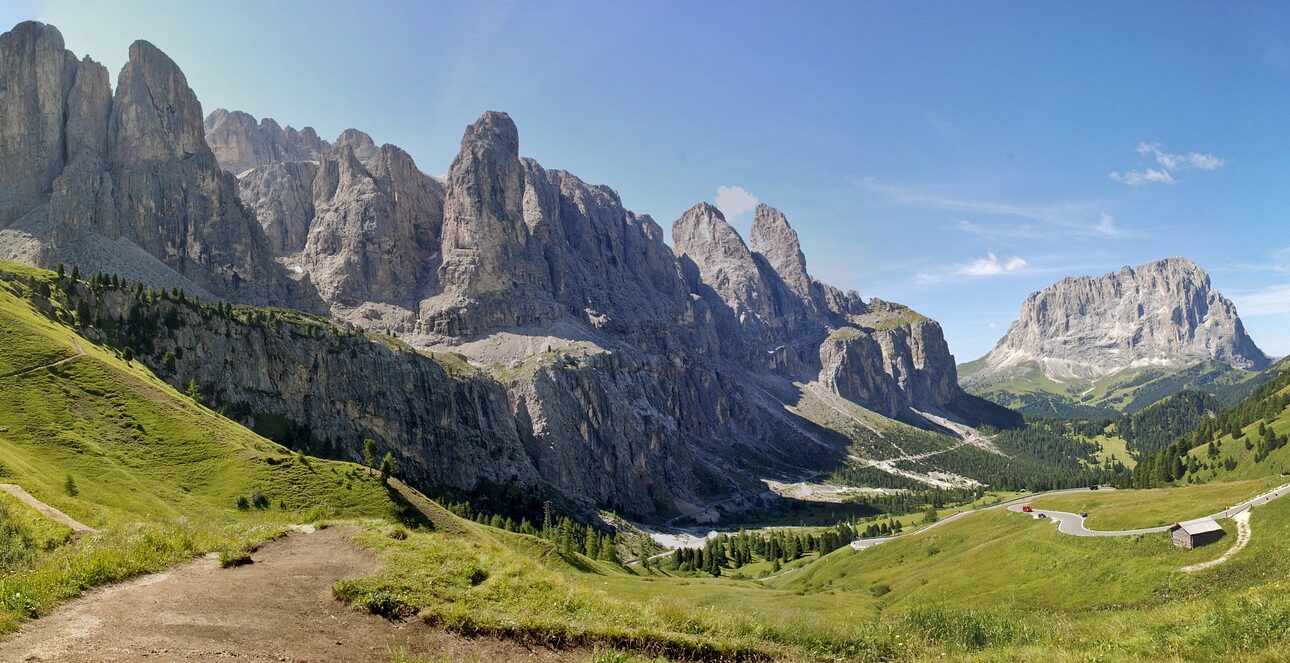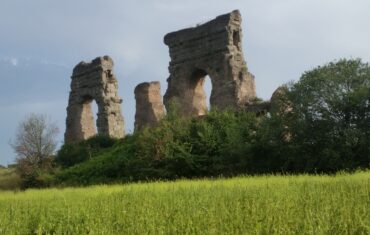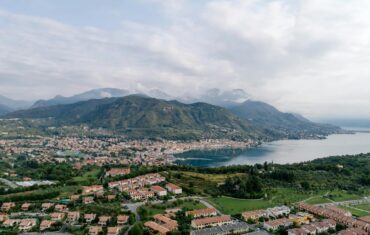The Dolomites, a UNESCO World Heritage site located in northeastern Italy, are a stunning alpine paradise known for their jagged peaks, lush valleys, and rich cultural heritage. Whether you’re an outdoor enthusiast seeking adventure or someone looking to immerse yourself in the serene beauty of nature, the Dolomites offer a diverse range of activities. Here’s a detailed guide to experiencing the best of this breathtaking region.
Hiking and Trekking
The Dolomites are a hiker’s dream, with a network of trails that range from gentle walks to challenging multi-day treks. Each trail offers a unique experience, allowing you to explore the region’s diverse landscapes, from alpine meadows to rugged cliffs.
- Tre Cime di Lavaredo: This iconic trail is one of the most recognizable in the Dolomites. The loop around the Tre Cime peaks is about 10 kilometers and takes around 4-5 hours. The trail is moderately challenging and offers stunning panoramic views of the three towering limestone peaks. Along the way, you’ll encounter mountain huts (rifugios) where you can rest and enjoy traditional alpine cuisine.
- Alta Via 1 & 2: The Alta Via 1 is a 120-kilometer trail that takes around 10-12 days to complete, winding through the heart of the Dolomites from Lago di Braies to Belluno. The Alta Via 2 is slightly more challenging and offers more rugged terrain. Both trails pass through high-altitude landscapes, including green pastures, rocky outcrops, and serene valleys. Along the routes, you’ll find refuges where you can stay overnight, making it an immersive way to experience the region’s natural beauty.
- Seceda Ridge: Located in the Val Gardena, the Seceda Ridge hike is famous for its dramatic, knife-edged peaks that jut into the sky. The hike can be started from the Ortisei or Santa Cristina villages, and a cable car ride can shorten the ascent. The ridge offers 360-degree views of the surrounding mountains and valleys, making it a favorite spot for photographers.
Rock Climbing
The Dolomites have long been a mecca for rock climbers, thanks to their unique limestone formations and varied climbing routes. The region offers everything from sport climbing to multi-pitch trad routes, making it suitable for all levels.
- Sella Towers: The Sella Towers offer classic climbs that are well-suited for both intermediate and experienced climbers. The four towers provide multiple routes, with varying degrees of difficulty. The most popular is the “Sella Towers Traverse,” which allows climbers to ascend and descend all four towers in one day.
- Marmolada: Known as the “Queen of the Dolomites,” Marmolada is the highest peak in the range, standing at 3,343 meters. It’s famous not only for its rock climbing but also for its glacier, which adds an extra layer of challenge to climbs. Routes here vary from technical rock climbs to mixed glacier routes, making it a diverse climbing destination.
- Cinque Torri: Located near Cortina d’Ampezzo, Cinque Torri is a group of five towers that offer routes for climbers of all skill levels. The area is also historically significant, as it was the site of intense fighting during World War I, and remnants of trenches and tunnels can still be explored.
Cycling
Cycling in the Dolomites is an exhilarating experience, with the region’s challenging climbs, winding roads, and breathtaking scenery making it a top destination for cyclists. The Dolomites are regularly featured in the Giro d’Italia, attracting cyclists from around the world.
- Passo Stelvio: One of the most famous and challenging climbs in Europe, Passo Stelvio features 48 hairpin bends and an ascent of over 1,800 meters. The climb is about 25 kilometers long, with an average gradient of 7.4%. The stunning views from the top make the grueling ride worthwhile, and it’s a must-do for any serious cyclist.
- Sella Ronda: This circuit around the Sella massif covers four mountain passes—Passo Pordoi, Passo Sella, Passo Gardena, and Passo Campolongo. The loop is about 52 kilometers long, with a total ascent of around 1,600 meters. It’s a challenging but rewarding route, offering stunning views of the Dolomites’ towering peaks and green valleys.
- Giau Pass: Another iconic climb, Giau Pass, is known for its steep gradients and stunning vistas. The ascent from Selva di Cadore is about 10 kilometers with an average gradient of 9.3%. The pass is often featured in the Giro d’Italia and offers cyclists a challenging ride with a spectacular payoff at the summit.
Skiing and Snowboarding
During winter, the Dolomites become a world-renowned skiing destination, attracting visitors with their extensive ski areas, modern facilities, and stunning alpine scenery.
- Dolomiti Superski: Covering 12 ski areas and offering over 1,200 kilometers of slopes, Dolomiti Superski is one of the largest ski networks in the world. The area is suitable for all levels, from beginners to advanced skiers, with a variety of slopes, snow parks, and off-piste opportunities. The Sellaronda circuit is particularly popular, allowing skiers to complete a full loop around the Sella massif in a single day.
- Cortina d’Ampezzo: Known as the “Queen of the Dolomites,” Cortina is one of Italy’s most famous ski resorts. It offers a mix of challenging black runs and wide, scenic pistes. The resort is also home to several high-end hotels, gourmet restaurants, and chic boutiques, making it a top choice for those seeking luxury in addition to great skiing.
- Val Gardena: Part of the Dolomiti Superski area, Val Gardena offers a wide range of slopes for all levels, with stunning views of the surrounding peaks. It’s also a gateway to the Sellaronda circuit and offers excellent après-ski options in the charming villages of Ortisei, Santa Cristina, and Selva.
Paragliding
For a truly unique perspective of the Dolomites, consider taking to the skies with a paragliding adventure. The region’s high peaks and wide valleys create ideal conditions for both tandem flights and solo paragliding.
- Col Rodella: Located near the town of Canazei, Col Rodella is one of the most popular paragliding launch sites in the Dolomites. The take-off area is easily accessible by cable car, and the flight offers stunning views of the surrounding peaks, including the Sella and Marmolada massifs.
- Seceda: Another prime paragliding spot, Seceda offers flights over the Val Gardena with panoramic views of the jagged peaks and lush valleys below. Flights from Seceda often include views of iconic landmarks such as the Odle Group and the Alpe di Siusi.
- Plose: Near the town of Bressanone, Plose offers paragliders the chance to soar above the Eisack Valley, with views extending to the Zillertal Alps in Austria. The area is also known for its thermals, which can extend flight times, making it a favorite among experienced paragliders.
Relaxation and Wellness
After days of adventure, the Dolomites provide plenty of opportunities to relax and rejuvenate. The region is home to a number of wellness retreats and spas that offer a combination of traditional Alpine treatments and modern therapies.
- Cortina d’Ampezzo: Known not only for its skiing but also for its luxury accommodations, Cortina is home to several high-end wellness hotels. Many of these offer extensive spa facilities, including saunas, steam baths, and outdoor hot tubs with mountain views. Try a traditional hay bath or a massage using local herbs for a truly Alpine experience.
- Val Gardena: In the villages of Ortisei, Santa Cristina, and Selva, you’ll find numerous hotels and wellness centers offering a range of treatments. The Adler Spa Resort in Ortisei is particularly well-known for its extensive wellness offerings, including an outdoor heated pool, panoramic saunas, and a variety of holistic treatments.
- Terme di Merano: For a more extensive spa experience, consider a visit to the Terme di Merano, located just outside the Dolomites. This modern thermal spa complex offers a wide range of indoor and outdoor pools, saunas, and wellness treatments, all set against the backdrop of the Merano Alps.
Cultural Exploration
The Dolomites are not just about nature; they also boast a rich cultural heritage that reflects the region’s blend of Italian, German, and Ladin influences. Exploring the local culture is a key part of any visit to the Dolomites.
- Ortisei: This charming town in Val Gardena is known for its rich Ladin culture, which is evident in the local architecture, language, and traditions. Visit the Museum Gherdëina to learn more about the Ladin people and their history. The town is also famous for its woodcarving tradition, and you’ll find numerous shops selling intricately carved figures and religious art.
- Cortina d’Ampezzo: Cortina offers a blend of Italian and Austrian influences, reflected in its architecture and cuisine. Explore the town’s elegant streets, visit the Basilica Minore dei Santi Filippo e Giacomo, and stop by the Mario Rimoldi Modern Art Museum, which houses an impressive collection of 20th-century Italian art. Cortina also has a fascinating history as a former host of the Winter Olympics in 1956, and you can visit the Olympic Ice Stadium, which still hosts events and activities.
- San Martino di Castrozza: This small town in the Trentino region is another cultural gem, offering a mix of Tyrolean and Italian influences. The town is surrounded by the dramatic Pale di San Martino range, making it a perfect base for exploring the nearby Paneveggio-Pale di San Martino Nature Park. Here, you can learn about the park’s unique ecosystem and the traditional use of the “Forest of Violins,” where wood for Stradivarius violins was historically sourced.
- Ladin Valleys: The Dolomites are home to several valleys where the Ladin culture is still very much alive. In the Val di Fassa, Val Badia, and Val Gardena, you’ll hear the Ladin language spoken, see traditional Ladin dress during festivals, and taste Ladin cuisine in local restaurants. The Ladin Museum in San Cassiano provides an in-depth look at the history, language, and customs of this ancient culture.
Gastronomy
The Dolomites offer a culinary experience that reflects the region’s diverse cultural influences. The cuisine here is a delightful blend of Italian, Austrian, and Ladin traditions, with a focus on hearty, flavorful dishes that are perfect after a day of outdoor activities.
- Speck: This smoked, cured ham is a staple in the Dolomites and is often served as part of an antipasto platter with local cheeses and bread. The unique flavor of speck comes from the combination of curing, smoking, and aging, and it pairs beautifully with a glass of local wine.
- Canederli: These large bread dumplings are a traditional dish in the Dolomites, often served in broth or with melted butter and cheese. They can be made with a variety of fillings, including speck, cheese, or spinach, and are a perfect comfort food after a day of hiking or skiing.
- Polenta: A versatile dish made from cornmeal, polenta is often served as a side dish with stews, sausages, or mushrooms. In the Dolomites, it’s typically cooked slowly to a creamy consistency and can also be grilled or baked for a different texture.
- Casunziei: These are a type of pasta similar to ravioli, filled with a variety of ingredients such as beetroot, spinach, or potatoes. They are usually served with melted butter and poppy seeds, creating a deliciously rich and comforting dish.
- Apfelstrudel: Reflecting the Austrian influence in the region, Apfelstrudel is a popular dessert in the Dolomites. This pastry is filled with spiced apples, raisins, and often nuts, and is served warm, sometimes with a dollop of whipped cream or vanilla sauce.
Photography
The Dolomites are a photographer’s paradise, offering endless opportunities to capture the region’s dramatic landscapes. From the sharp, jagged peaks to the serene, reflective lakes, the Dolomites provide stunning backdrops for both amateur and professional photographers.
- Seceda Ridge: The jagged peaks of Seceda are one of the most photographed spots in the Dolomites. The ridge’s unique formation and the sweeping views of the surrounding valleys make it a prime location for capturing the beauty of the Dolomites, especially at sunrise or sunset when the light is most dramatic.
- Lago di Braies: Known as the “Pearl of the Dolomites,” Lago di Braies is a stunning alpine lake with emerald-green waters surrounded by towering mountains. The lake is a favorite spot for photographers, particularly in the early morning when the water is still, creating a perfect mirror image of the mountains.
- Alpe di Siusi: The largest high-altitude alpine meadow in Europe, Alpe di Siusi offers vast, rolling landscapes dotted with traditional wooden huts and framed by the towering peaks of the Dolomites. This area is especially beautiful in the early morning or late afternoon when the light casts long shadows across the meadow.
- Tre Cime di Lavaredo: The iconic three peaks are a must-photograph destination in the Dolomites. The best views can be captured from the trail that circles the peaks, with numerous vantage points that offer different perspectives. The area is especially photogenic during the golden hour, when the warm light accentuates the rugged features of the peaks.
Final Thoughts
The Dolomites are a true gem of the Italian Alps, offering an unparalleled mix of natural beauty, outdoor adventure, and rich cultural experiences. Whether you’re hiking through breathtaking landscapes, indulging in delicious local cuisine, or simply soaking in the views from a mountain spa, the Dolomites provide a destination that will captivate and inspire you. Start planning your trip to this extraordinary region and prepare to be enchanted by the majestic beauty of the Dolomites!









